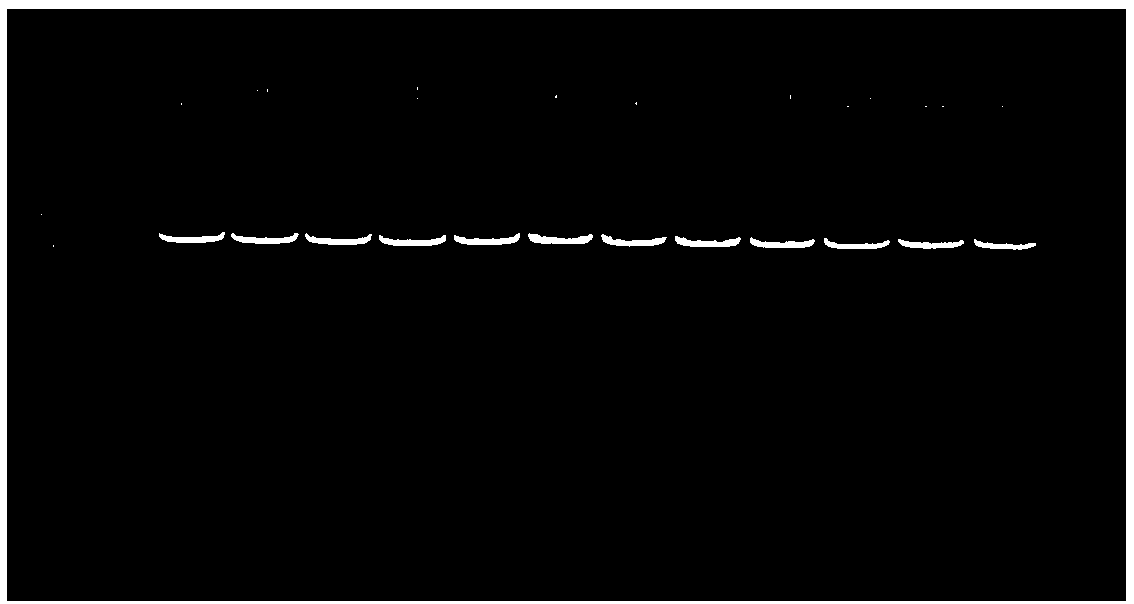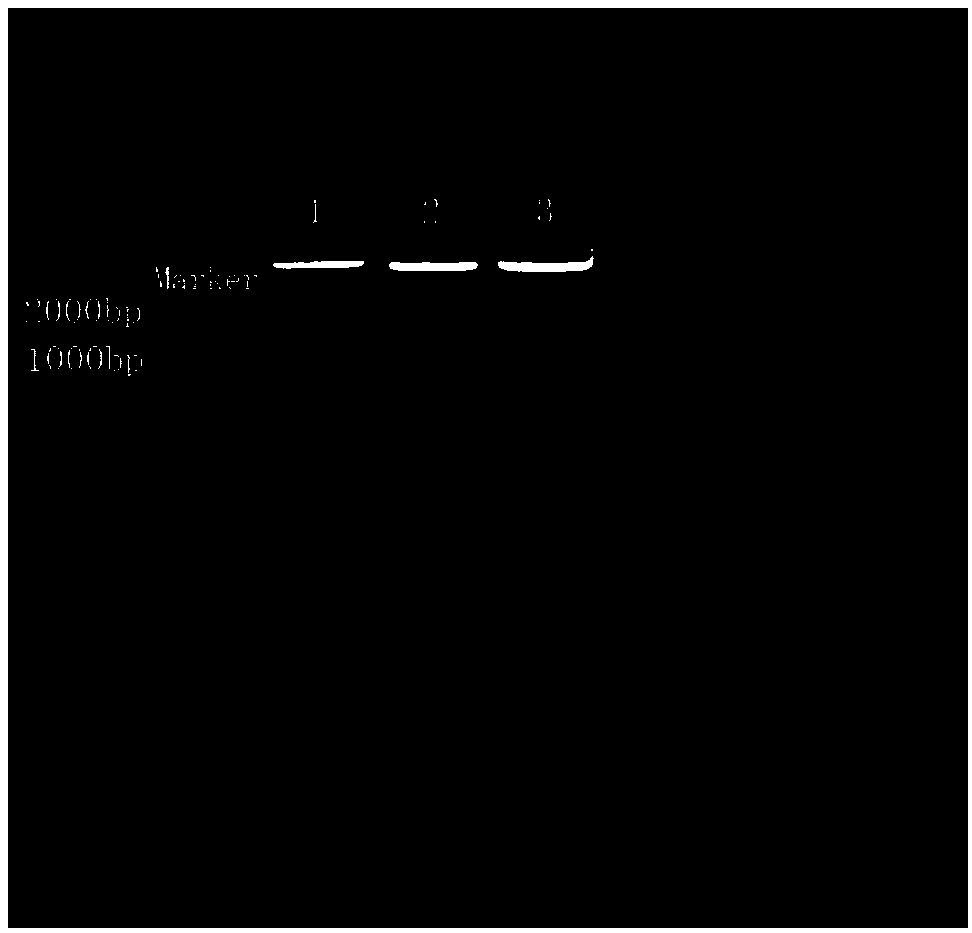Creation and application of heavy metal super-enriched genetically-engineered oryza sativa genetically modified with Sedum plumbizincicola SpNramp5 gene
A technology of transgenic engineering and sedum with ore, which is applied in the field of creation and application of heavy metal hyperaccumulation transgenic engineering rice, can solve the problems of special growth environment, heavy metal return, and small biomass, and achieve good genetic transformation effect and expression The effect of high amount and large biomass
- Summary
- Abstract
- Description
- Claims
- Application Information
AI Technical Summary
Problems solved by technology
Method used
Image
Examples
Embodiment 1
[0047] Example 1 Cloning of SpNramp5 gene
[0048] Grind Sedum sedatus seedlings into powder using liquid nitrogen, extract its RNA using the Trizol method, and reverse-transcribe it into cDNA using the TOYOBO reverse transcription kit, and use Primer5 to design the cDNA sequence of the SpNramp5 gene provided by NCBI. Downstream primers, and synthetic primers, the nucleotide sequence of the designed primers is:
[0049] Upstream sequence: 5'TTCCGGCCTTCGACTTTGACG 3' (as shown in SEQ ID NO: 2);
[0050] Downstream sequence: 5'AACCGTTAACGCGCATTCGCACA 3' (shown in SEQ ID NO: 3).
[0051] After the primers are synthesized, dissolve them with 1×TE, and then carry out PCR amplification, using the cDNA of S. It was amplified by GXL Premix, and the amplified product was electrophoresed on 1% agarose gel, and the target band was excised and recovered using a gel recovery kit. The electrophoresis of the amplified product is as follows figure 1 As shown, the band indicated by the arro...
Embodiment 2
[0052] Example 2 Construction of transformation vectors for heavy metal hyperaccumulation transgenic plants
[0053] (1) The construction of the transformation vector containing Ubiquitin promoter, Bar screening gene and 3×Flag tag is based on the laboratory’s own pCAMBIA1301-3×Flag vector, which is obtained after transformation through the following steps:
[0054] ① Obtaining the Bar screening gene: the pCAMBIA3301 vector contains the Bar screening gene and the CaMV35S promoter. In this example, the CaMV35S promoter that comes with the pCAMBIA3301 vector is used to start the Bar screening gene, which can enhance the efficient transformation of the target gene. The CaMV35S promoter core The nucleotide sequence is shown in SEQ ID NO:9. The pCAMBIA3301 vector was cut with Xho I endonuclease, the digested product was subjected to 1% agarose gel electrophoresis, and a small band (608bp) was recovered. Homologous recombination primers were designed according to the pCAMBIA1301 ve...
Embodiment 3
[0065] Example 3 Overexpression of SpNramp5 gene in transgenic plants with heavy metal hyperaccumulation binary vector
[0066] Design homologous recombination primers according to the two ends of the ORF region of the SpNramp5 gene, the nucleotide sequence of the designed homologous recombination primers is:
[0067] Upstream sequence (shown as SEQ ID NO: 12):
[0068] 5'TTCTGCAGGTCGACTCTAGAGGATCCATGGCATCAACTGTCGGAAACGC3';
[0069] Downstream sequence (shown as SEQ ID NO: 13):
[0070] 5'CTTTGTAGTCGGTACCCGGGGATCCCTCTAAGACAGCTCTGCGTTGCGG3'.
[0071] The 19T vector containing SpNramp5 was used as a template for PCR amplification using high-fidelity enzymes. The PCR product was subjected to electrophoresis on 1% agarose gel, and the target band was recovered for future use. The constructed pUb-3×Flag-Bar transformation vector and p2×CaMV35S-HYG transformation vector were respectively digested with BamH I, and the digested products were directly gel-recovered for future use. ...
PUM
 Login to View More
Login to View More Abstract
Description
Claims
Application Information
 Login to View More
Login to View More - R&D Engineer
- R&D Manager
- IP Professional
- Industry Leading Data Capabilities
- Powerful AI technology
- Patent DNA Extraction
Browse by: Latest US Patents, China's latest patents, Technical Efficacy Thesaurus, Application Domain, Technology Topic, Popular Technical Reports.
© 2024 PatSnap. All rights reserved.Legal|Privacy policy|Modern Slavery Act Transparency Statement|Sitemap|About US| Contact US: help@patsnap.com










